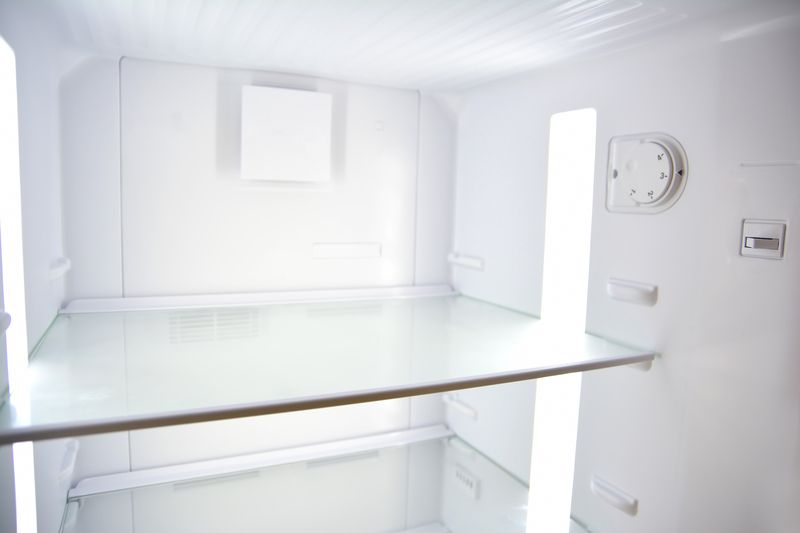Protect Your Investment: The Smart Way to Store Your Sofa for Years
A comfortable, stylish sofa is often one of the most significant investments you make for your home's interior. Whether you're downsizing, moving, remodeling, or simply making changes, properly storing your sofa can be the key to ensuring it looks and functions like new for years to come. Learning how to store a sofa safely is crucial for preserving its value, comfort, and beauty. This comprehensive guide will show you the smart way to store your sofa for years and keep it in perfect condition.
Why Storing Your Sofa Properly Matters
A sofa isn't just a piece of furniture--it's where families gather, guests sit, and memories are made. Considering the expense and sentimental value, protecting your sofa during storage becomes incredibly important. Without proper precautions, your sofa may suffer damage such as:
- Mold and mildew from moisture buildup
- Fabric and cushion deterioration from improper packaging
- Frame warping due to poor support
- Pest infestations
- Fading and discoloration from sunlight
With the right sofa storage techniques, you can protect your couch investment and ensure that it stays as beautiful and comfortable as the day you bought it. Let's explore every step to smart, secure and long-lasting sofa storage.

Preparation: The First Step to Sofa Storage Success
1. Thoroughly Clean Your Sofa
*Never put a dirty sofa in storage!* Dust, crumbs, oils, and other residues can attract pests and cause odors or stains to set in. For a complete clean:
- Vacuum Every Corner: Use a brush attachment to clean cushions, seams, and underneath.
- Treat Stains: Use an upholstery cleaner recommended by the manufacturer; test a hidden spot first.
- Wipe Down Frames: If your sofa has metal or wooden parts, wipe them with a gentle cleaner and dry completely.
- Let it Dry: Ensure all areas, especially fabric and cushions, are fully dry before moving to prevent mold and mildew.
2. Disassemble If Possible
Large sofas can be unwieldy and more susceptible to damage if stored in one piece. Check if your sofa can be disassembled by removing legs, backs, or arms. Keep all hardware in a labeled bag and tape it to the frame or keep it in a secure box. This step prevents breakages and saves space.
3. Protect Cushions and Seats
Remove all cushions and wrap each individually in breathable materials like cotton sheets or furniture blankets. Avoid plastic wrap directly on fabric, as it can trap moisture and prompt mold growth. Store cushions upright to maintain their shape.
4. Choose Appropriate Covers
To protect your sofa in storage from dust, scratches, and pests, use a high-quality furniture cover or moving blanket. For long-term storage, avoid cheap plastic covers that can cause sweating and mildew. Use breathable covers designed for fabric or leather (as appropriate).
Selecting the Right Sofa Storage Space
1. Climate-Controlled Storage
If you want to store your sofa for years, a climate-controlled storage unit is worth the investment. Extreme temperatures and humidity can cause wood to crack, fabric to fade, and leather to dry out. Thanks to stable climate and humidity, your sofa is much less likely to deteriorate.
- Climate-controlled storage protects against:
- Mold and mildew
- Wood swelling or shrinking
- Leather cracking or peeling
- Warped frames
2. Enough Space for Ventilation
Cramming your sofa in a small space can worsen shape and structure damage. Choose a storage unit with enough space for air to circulate completely around the sofa--not just on top and bottom, but on all sides. Good ventilation helps prevent moisture buildup.
3. Avoid Direct Sunlight
Sunlight can cause upholstery to fade and materials to become brittle. When storing a sofa long-term, choose a storage location away from windows or use covers with UV protection. If using a garage or basement for temporary storage, choose the shadiest spot possible.
How to Protect Your Couch in Storage: Step-By-Step Guide
Step 1: Prepare the Storage Area
- Clean the storage area thoroughly to remove dust, dirt, and pests.
- If using a unit, lay down wooden pallets or thick plastic sheeting to prevent contact with concrete floors, which can attract moisture.
- Check for leaks or areas prone to condensation, and avoid placing your sofa in those spots.
Step 2: Position the Sofa Correctly
- Never store a sofa on its end or side for long periods; this can stress joints and cause warping. Always store sofas upright, as you'd place them in your living room.
- If possible, place the sofa on risers or pallets to keep it off the ground.
- Leave space between the sofa and the wall for airflow.
Step 3: Apply Protective Covers
- Cover the entire sofa with breathable furniture blankets or custom slipcovers.
- Cover all cushions separately but make sure nothing is so tight it compresses the padding.
- If you must use plastic, only use it as an external layer and leave an opening for ventilation.
Step 4: Avoid Unnecessary Weight
- Do not stack heavy boxes or items on the sofa. This damages the frame and sags the cushions over time.
- For modular sofas, stack sections carefully with padding in between for protection.
Step 5: Regularly Inspect the Sofa
- Visit your storage unit or space every couple of months if possible.
- Check for signs of moisture, pests, or damage.
- Air out covers briefly and clear off any dust you find.
Additional Tips for Long-Term Sofa Storage
Leather Sofas
- Treat with a leather conditioner before storage to prevent drying and cracking.
- Do not use plastic wraps directly on leather; it needs to breathe.
- Keep away from heat sources and sunlight for optimal protection.
Fabric Sofas
- Use fabric-safe cleaning solutions and ensure the fabric is dry before storage.
- Cover with sheets or cotton covers to allow airflow.
- Sprinkle some baking soda or place moisture-absorbing packets nearby (not in contact with the sofa).
Wooden or Metal Frames
- Apply a protective wood polish or metal anti-rust spray.
- Ensure all parts are dry and free of debris.
- Wrap detached legs or arms and store them with soft padding.
What to Avoid When Storing a Couch for Years
- Cheap plastic wrap: While it may seem like cheap insurance, plastic traps moisture inside, leading to mold and unpleasant odors.
- Direct Floor Contact: Concrete floors attract moisture--always use pallets or risers for protection.
- Tight Spaces: Squeezing your sofa in a cramped area promotes poor airflow, mold, and even physical damage.
- Ignoring Inspections: Out of sight should not mean out of mind. Make periodic inspections a part of your storage routine.
- Storing with Food: Never place any food items in your storage unit--they attract pests, which can destroy your furniture investment.

Common Questions: Long-Term Couch Storage
How Long Can My Sofa Be Stored?
With proper preparation and climate-controlled storage, a sofa can remain in excellent condition for five years or more. Leather sofas typically withstand storage better, but all upholstery types benefit from careful prep and monitoring.
How Do I Store a Sofa in My Garage?
While garages are not ideal due to temperature fluctuations and humidity, following these steps helps minimize risks:
- Store the sofa off the concrete floor with risers or boards.
- Use a dehumidifier if your garage is damp.
- Don't tightly seal with plastic; use fabric covers.
- Check frequently for pests and moisture.
Is Self-Storage Safe for a Couch?
Yes, as long as you choose a reputable, climate-controlled self-storage facility. Read reviews, ask about pest control, and ensure your unit has strong security. For expensive or antique sofas, confirm that your insurance covers stored items.
The Bottom Line: Why Sofa Storage Is Worth the Effort
Your sofa is so much more than just a seat--it's an investment in style, comfort, and home happiness. Protecting your investment with careful, informed storage ensures that when you're ready to bring your sofa back into your living space, it's every bit as welcoming as you remember.
To store your sofa for years without worry, follow all recommended steps: clean thoroughly, disassemble if possible, use proper covers, choose the right storage, and inspect regularly. The result? A beautiful, long-lasting couch ready for your family's next chapter.
Remember, a little effort today means many years of comfort and style ahead. That's the smart way to protect your investment--and your home.



